You will need: brake fluid, clean rag.
USEFUL ADVICE.
Brake fluid type DOT-3 or DOT-4.
We recommend checking the level before each ride and topping up the reservoir if necessary. If you have to add brake fluid to the reservoir quite often, immediately fix the problem.
When changing the brake fluid in the system, remember or write down the brand of fluid that was filled in so that you use the same brand when topping up.
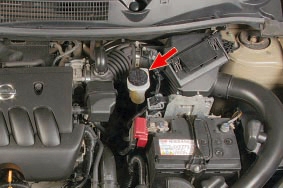
The reservoir is installed on the main brake cylinder on the left side of the engine compartment near the bulkhead.
NOTE.
The brake master cylinder reservoir also serves as a supply reservoir for the clutch master cylinder on vehicles with a manual transmission and is connected to the cylinder by a flexible hose.
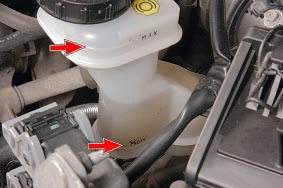
Control the level of the working fluid visually. On the translucent wall of the tank body, the marks "MAX" and "MIN" are applied.
WARNING.
Take precautions when handling brake fluid: it is toxic.
USEFUL ADVICE.
In order not to expose yourself in the future to unforeseen expenses for the repair of the brake system, and even the entire car as a whole, replace the brake fluid with fresh one in a timely manner. It is very hygroscopic and absorbs moisture from the air, which, in addition to corroding parts of the brake system, lowers the boiling point of the fluid itself, and this can lead to brake failure during frequent heavy braking.
Do not reuse the fluid drained from the system: it is contaminated, saturated with air and moisture.
Contact with brake fluid on wires, plastic or painted parts of the body can cause damage. If liquid comes into contact with these parts, wipe them off immediately with a clean cloth.
1. Check the brake fluid level in the reservoir. It must be at least the “MIN” mark on the tank body.
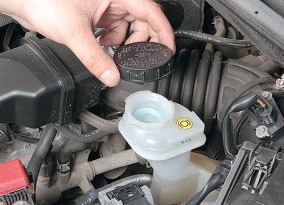
2. If the brake fluid level is below the “MIN” mark, unscrew the reservoir cap
NOTE.
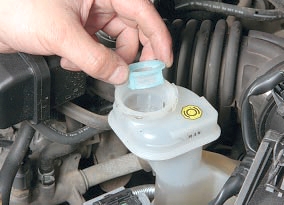
To prevent dirt from entering the master cylinder reservoir, a strainer is installed at the top of the reservoir filler neck. If necessary, remove the filter and clean it of dirt.
If there are particles of dirt or rust on the filter and in the tank, replace the brake fluid.
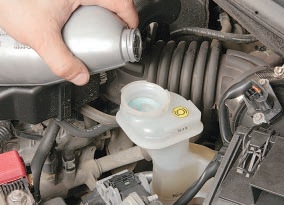
3. and add brake fluid to the level of the seam connecting the upper and lower parts of the tank.

4. Then wrap the tank cap.
WARNING.
A gradual drop in the brake fluid level with no leaks most likely indicates the need to replace the brake pads. Check the condition of the brake pads. Untimely replacement of pads leads to costly repairs (replacement of brake discs, drums, calipers)!
Source: http://nissan-qashqai.dv13.ru/neispravnosti/proverka-urovnya-i-dolivka-tormoznoj-zhidkosti-v-bachok-gidroprivodov-tormoznoj-sistemy-i-vyklyucheniya-scepleniya/
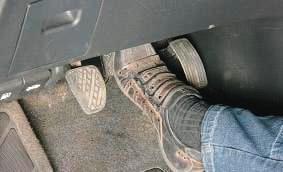
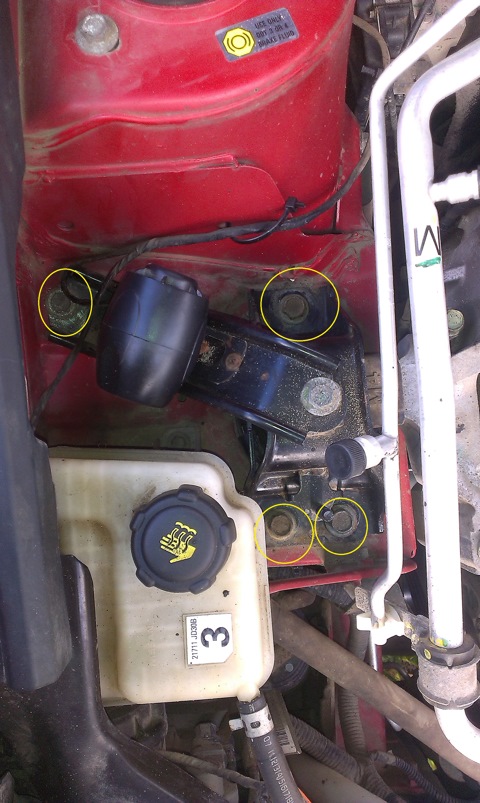

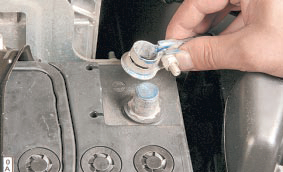
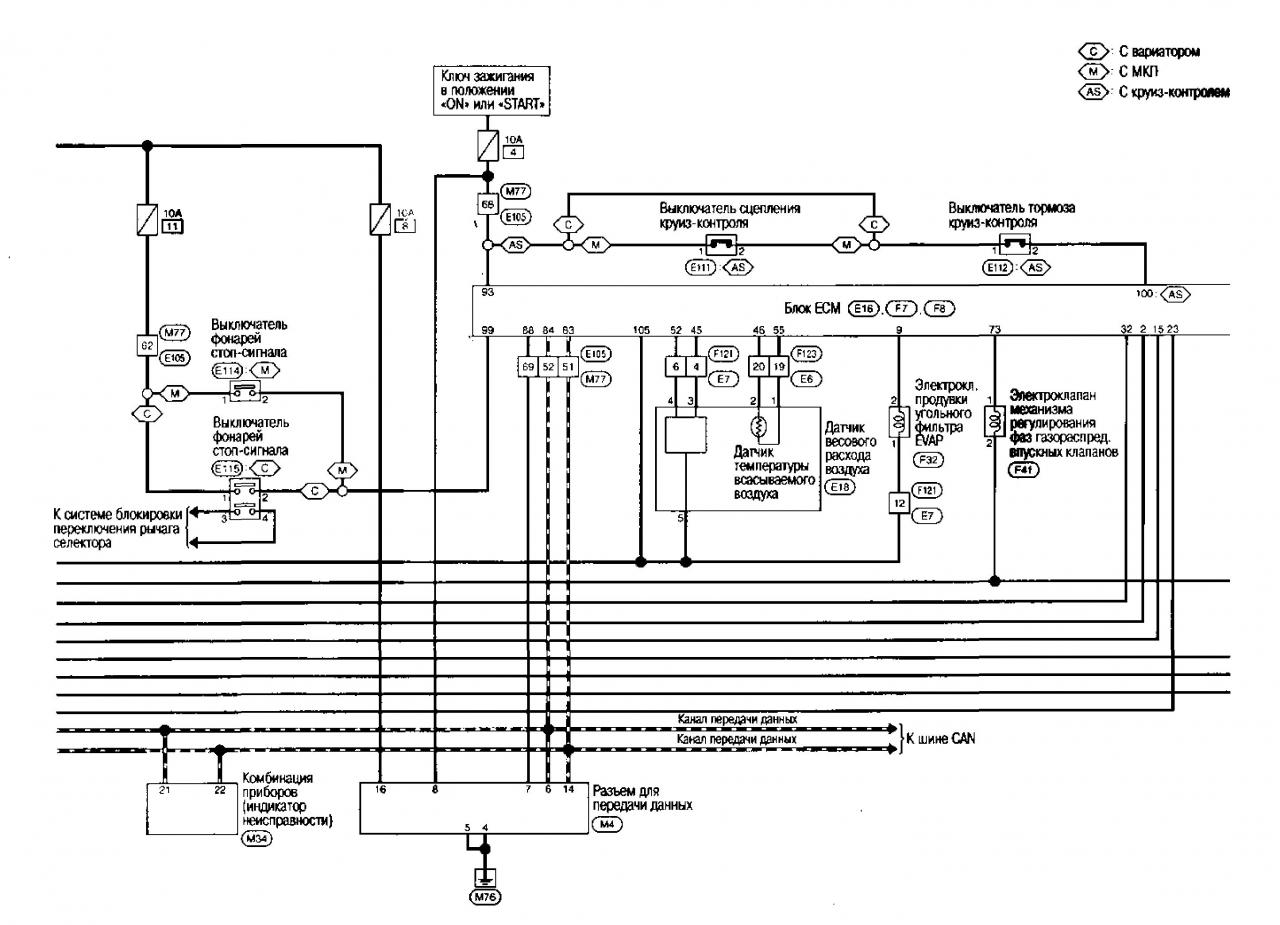
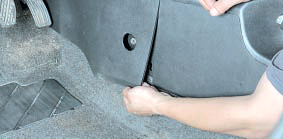

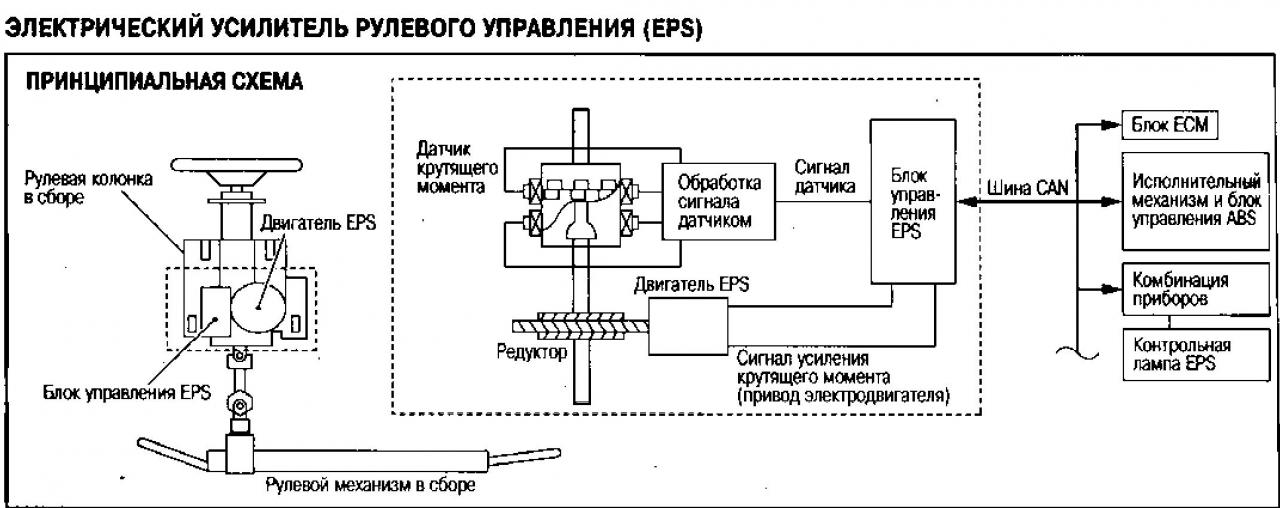
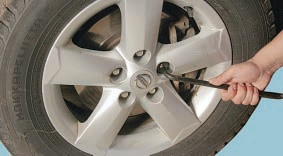
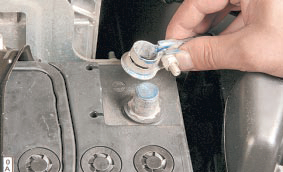
![1 generation [2007 - 2010]](/uploads/Nissan_Qashqai_2007-2010_.jpg)
